Search Images
Browse Content (p. 1301)
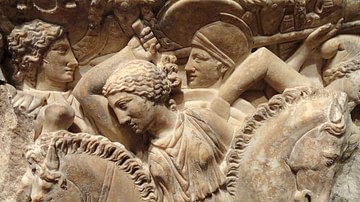
Image
Amazonomachy Detail
Amazonomachy, detail, late 2nd to early 3rd century CE, front and side of a sarcophagus, Roman. Pentelic marble. Exhibit in the Sackler Museum, Harvard University, Cambridge, Massachusetts, USA. The museum permitted photography of this...
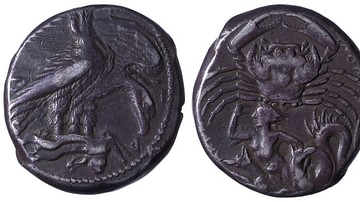
Image
Scylla, Agrigento Coin
A silver coin from Agrigento depicting Scylla the monster from Greek mythology thought to inhabit the straits between Sicily and the Italian mainland. 5th century BCE. (British Museum, London)
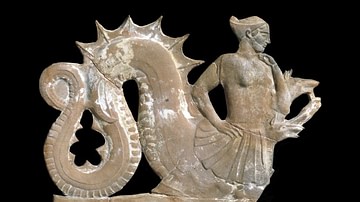
Image
Scylla Terracotta Plaque
A terracotta plaque depicting Scylla the sea monster from Greek mythology thought to inhabit the straits between Sicily and the Italian mainland, from the Cyclades, 450 BCE. Height: 12.5 cm.
The British Museum, London.
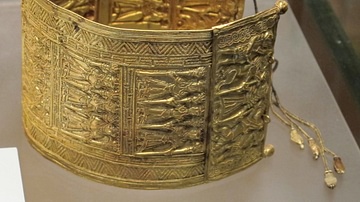
Image
Gold Etruscan Bracelet
A gold bracelet from the Regolini-Galassi Tomb at Etruscan Cerveteri, Italy. 7th century BCE. The design has trios of women repeated around the bracelet whose hair suggests a Phoenician origin. (Vatican Museums, Rome)
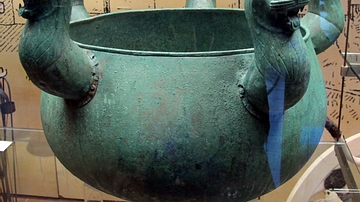
Image
Etruscan Bronze Cauldron
A bronze cauldron from the Regolini-Galassi tomb at Etruscan Cerveteri, Italy. 7th century BCE. (Vatican Museums, Rome)
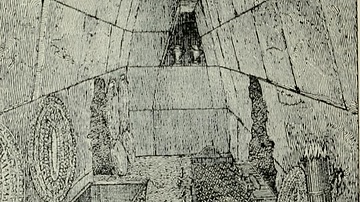
Image
Regolini-Galassi Tomb Chamber
A sketch of the main chamber of the Regolini-Galassi Tomb at Etruscan Cerveteri. 7th century BCE. Inside the chamber were the remains of a female with many precious goods in gold and silver.
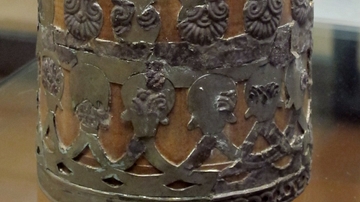
Image
Silver Etruscan Cup
A cup with sheet silver decoration from the Etruscan Regolini-Galassi Tomb at Cerveteri, Italy. 7th century BCE. (Vatican Museums, Rome)
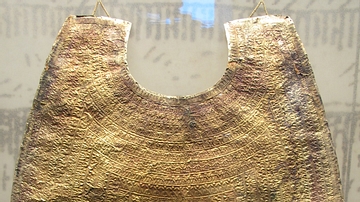
Image
Gold Etruscan Pectoral
A gold sheet pectoral from the Etruscan Regolini-Galassi Tomb at Cerveteri, Italy. 7th century BCE. Height: 42 cm. (Vatican Museums, Rome)
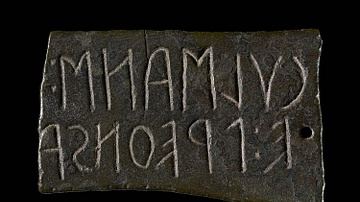
Image
Etruscan Inscription Plaque
A copper alloy plaque with an inscription in the Etruscan alphabet. The inscription reads from right to left and the top line is the name of the god Culsans, the second line is as yet undeciphered. 3rd - 2nd century BCE. (British Museum...
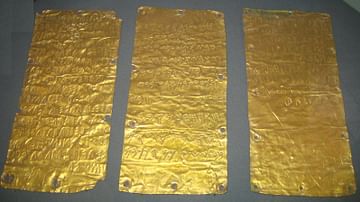
Image
Etruscan & Phoenician Inscriptions
Gold sheet plaques from Pygri, the port of Etruscan Cerveteri. In both the Etruscan and Phoenician alphabet they describe the separation of a space dedicated in the temple there for Astarte. c. 500 BCE (Museo di Villa Giulia, Rome)